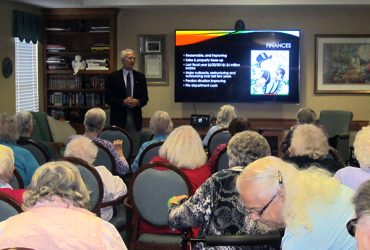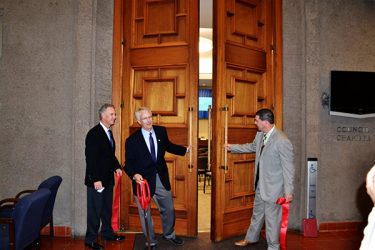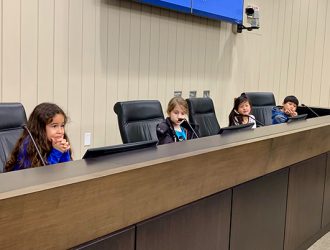Here are responses I received from staff regarding the questions I raised prior to the meeting. The corresponding questions are shown in italics.
Since we’re being asked to approve several (modest) increases to the budget it’d be appropriate for staff to comment, in general, on where we stand vis a vis the overall budget. Are we ahead or behind or otherwise roughly on track?
Answer from Rebecca: We are working on closing out the 2nd quarter financials and the fiscal year-end projections now, but we anticipate being ahead of budget this year. We budget revenues conservatively and while we are still reviewing the numbers, early indications show that will likely exceed budget in sales tax, TOT and VLF. This combined with salary savings will put us ahead of budget for the year.
The long-term trash reduction plan seems heavily focused on “intervention after the fact” (i.e., cleaning up trash already on the streets). Why can’t we do more to reduce trash at the source? For example, why can’t we require businesses whose customers generate significant trash loads to take actions to reduce trash?
Answer from Jay: The need for the plan was in part based on the desire to clean up after the trash generators, but also to try and focus attention on prevention too. We will be attempting to do outreach for prolific trash generators and about trash generating activities, such as uncovered loads. As we have identified the Trash Generation Map, we also will be using prevention efforts to help change the high-generation areas on the map to low-generation.
Also, there’s a reliance on volunteer clean-ups. That doesn’t seem sustainable to me. What’s the experience with that approach in other, similar communities?
Answer from Jay: That is just one aspect of the effort, given that we want to leverage community buy-in to the idea that we need to keep trash within the City cleaned up so it will not end up in the waterways. It is usually very effective in a small defined area such as a creek, rather than for city-wide use. Too much area to cover.
Regarding the landmark hotel RFP, why shouldn’t we require bidders to submit justification for what they believe the prevailing wage premium to be? There’s a risk this results in higher numbers, and could foster de facto collusion among the bidders. But we aren’t bound by what they tell us, and overall I’d like to hear what they have to say. I’d want them to submit not just an assertion, but an analysis backed up by empirical data.
Answer from Al: Asking bidders to identify the premium for prevailing wage justification is fine – but at this stage it is only a proposal and we may not get a ton of analysis to support it. Like many aspects of the RFP, the details will likely change as the project proceeds and more details are known about the design and scale that cannot be nailed down at this early stage.
Does the PERS Safety Retirement amendment save us money? The staff report implies it’s a wash, but I thought by doing this we either saved money elsewhere, or reduced the risk/likelihood that our expenses elsewhere would increase.
Answer from Rebecca: Long term, it will depend on the status of the CalPERS appeal. If the ALJ and the CalPERS board approve our appeal and we are able to move back into the “active” pool, the City should be able to reduce the payments to PERS for the former police department. Since the outcome of the appeal is still several months away, we do not have an estimate of what the reductions in payment might be.
I found it difficult to parse the proposed PERS Safety Retirement amendment, as it wholesale eliminates and replaces language. Is there a finer-grained redline available? What are the main provisions which are being changed?
Answer from Rebecca: They did not provide us a red-lined version but the only change was to add Section J or Government Code 20434 which allows the City to categorize certain classification specifications as Safety positions, though the positions may not actually perform active firefighting duties. This is reflected in the resolution that is before Council tonight for approval. However, in reviewing the document against the last amendment, there was one section that CalPERS erroneously removed. CalPERS sent us the corrected version which will be given to Council tonight and uploaded to the website accordingly.
Answer includes the CALPERS attachments. Attached is the last signed Amendment dated 3/12/2012 and the new Amendment on the agenda for tonight. Note the new one will be handed out to Councilmembers as CalPERS erroneously had left out a paragraph.
The changes from the last amendment are the following:
Section 3 – b, d, e f, and g have been replaced with Section 3b in the new amendment. This change came from CalPERS legal as they have updated their indemnity language. It is non-negotiable.
Section 15 – j has been added to account for the Fire Inspector reclassification
I’d like confirmation that our 2013 approval of SBSA/SVCWA bonds has expired, or is otherwise no longer in effect. I’m sure that’s the case…but I don’t want to be on the hook for the debt financing twice, as it were.
Answer from Jay: According to Dan Child, we technically could have used the previous approval, but his consultant recommended a fresh start because so much time had passed. Plus, it was for a 2013 bond issue, and we are now calling them the 2014 Wastewater Revenue Bonds.
I don’t understand why the % of SBSA/SVCWA debt we’re on the hook for is undefined in the Financing Agreement. Several other provisions which I think should also be known today are also blank. I’m not comfortable approving a document with things like “what % of the debt do we owe” being undefined.
Answer from Jay: Again, according to Dan, there are many places in the financing agreement that cannot be filled in until the actual bond sale, such as: interest rates; dates of issuance; payment schedules; etc. The % share is governed by the JPA, so there is no danger of more than our fair share of the debt being assigned to us.
Are we jointly and severally responsible for SBSA/SVCWA debt service? Or just responsible for our portion? What happens if, say, West Bay Sanitary District fails to pay its share? Do the lenders have recourse to us for payment? Can they hold the facility hostage (i.e., take control of it) and thereby pressure us to cover another agency’s obligation?
Answer from Jay: We are obligated for our portion only, as per the JPA agreement. There is no cross-collateralization. The obligation to make the bond payments is on the member agency, not SBSA, so whoever was the successor to the defaulting agency would take on that obligation. It was their collateral that secured the bond amount, so in theory the lending agency would have to sue them to get paid.
I read language in the SBSA/SVCWA Financing Agreement which limits or prohibits the City from issuing other obligations. How does that interact with financings like the one we’re pursuing for our landmark hotel property purchase? Is it speaking only to the sewer fund monies?
Answer from Rebecca: My understanding is that this only relates to the Sewer Enterprise Fund. Since that fund has a dedicated revenue source, the General Fund obligations would be separate. Jay concurs with this answer; the City has set up the Sewer Fund as its own enterprise, with its own dedicated source of revenue sufficient to make the bond debt payments.
Have we ever appointed an individual to two commissions simultaneously?
Answer from Crystal: Yes. John Sieling was appointed to PR&C on 3/12/12 and to EDAC on 7/9/12. He’s currently still serving on both.
Based on the history and outlook described in the Neil Martin & Associates item, it seems like we have a long-term, and ongoing, need for more planning staff resources. Is that the case? If that’s the case, what is the cost/benefit trade-off of using Neil Martin as opposed to hiring more staff? I support using contractors for dealing with peak/valley issues, but it seems like we’re not expecting valleys.
Answer from Al: We are definitely seeing an increased demand for planning services as well as economic development activity. Signs point to a couple of years of increased activity. It could change after that.
Knowing marketplace activity can fluctuate month to month and year to year, using the consultant allows us to scale up and down in hours at a lower cost (I will try to get a cost differential between city employee and consultant planner before the meeting). It also allows us to utilize different levels of expertise from the administrative level to journey and senior expertise levels on an as needed hourly basis.
We have a core staff of city planners in place to meet the day to day operational demands. If we were to hire another full time staff person it would certainly be helpful on a longer term basis but it would not give us as much flexibility to manage the skill levels of what we need. Also, if work demand decreases we may have to lay someone off as we have needed to do this in the past. If I were to look at an area to further augment staff resources and give us more flexibility it would be the 15% contingency per division we are asking for as this is conservative.




























